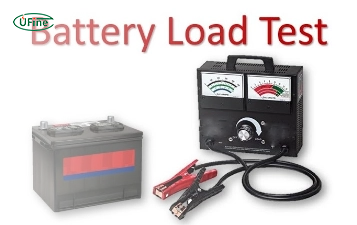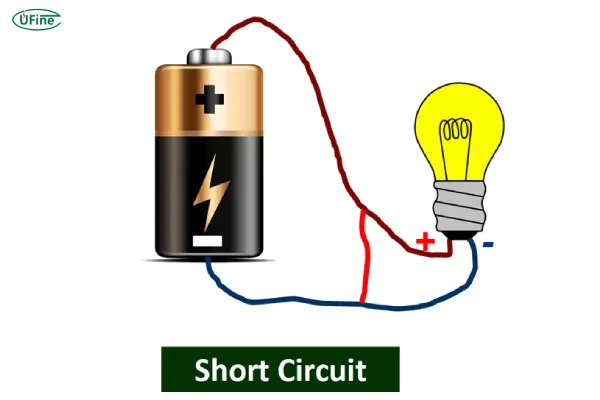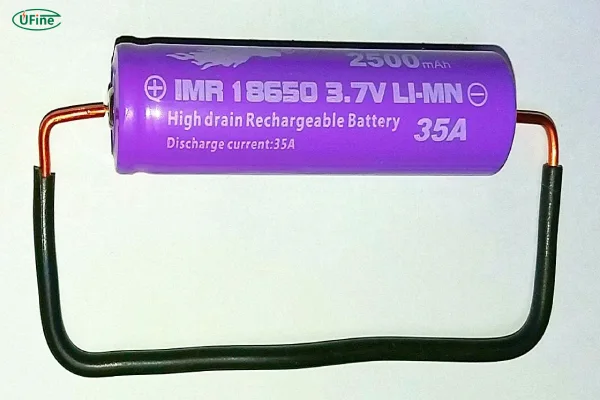
- Part 1. What is a 18650 battery?
- Part 2. Understanding a short circuit
- Part 3. Causes of 18650 battery short circuits
- Part 4. What happens when a 18650 battery short circuits?
- Part 5. Signs of a shorted 18650 battery
- Part 6. Dangers and consequences
- Part 7. How to prevent a 18650 battery short circuit
- Part 8. What to do if a 18650 battery short circuits
- Part 9. Can a short-circuited 18650 battery be recovered?
- Part 10. Proper disposal of a shorted or damaged battery
- Part 11. Safety tips for using 18650 batteries
- Part 12. Conclusion
What happens if the 18650 battery short circuits? This is a critical question for both everyday users and professionals. A short circuit can cause overheating, fire, or even an explosion, making it a serious concern.
In this article, we’ll explore the causes, consequences, and safety measures related to 18650 battery short circuits. Whether you’re a hobbyist, engineer, or procurement specialist, this guide will help you stay safe and informed.
Part 1. What is a 18650 battery?
A 18650 battery is a rechargeable lithium-ion battery with a cylindrical shape. The name comes from its dimensions: 18 mm in diameter and 65 mm in length. These cells are highly energy-dense and capable of high discharge rates, which makes them ideal for devices that require both compactness and power.
There are several types of 18650 batteries depending on the chemical composition, such as:
- Li-ion (Lithium Cobalt Oxide, LiCoO2) – High energy density, common in consumer electronics.
- LiFePO4 (Lithium Iron Phosphate) – More stable, longer life cycle, safer under thermal stress.
- Lithium Manganese Oxide (LiMn2O4) – Higher temperature stability.
Custom 18650 batteries can vary in voltage, capacity, temperature tolerance, and discharge rate, depending on the application. Ufine Battery, a leading custom lithium battery manufacturer in China, offers an extensive range of 18650 batteries tailored to specific customer requirements. Whether you need high-rate discharge, ultra-thin design, or high-temperature performance, Ufine can deliver reliable solutions for your project. Contact Ufine Battery today
Part 2. Understanding a short circuit
A short circuit occurs when electrical current flows along an unintended path with little to no resistance. This usually happens when the positive and negative terminals of a battery are directly connected, allowing a massive surge of current.
In the context of a 18650 battery, this can occur in two main ways:
- External Short Circuit: Caused by physical contact between terminals, often due to a metallic object like a coin, screwdriver, or keys.
- Internal Short Circuit: Happens inside the battery cell, usually due to a separator failure, damage, or manufacturing defect.
Both types can be extremely dangerous.
Part 3. Causes of 18650 battery short circuits
Understanding what causes a short circuit in a 18650 battery can help prevent dangerous incidents. Common causes include:
- Physical Damage: Dropping, crushing, or puncturing the battery can damage the separator and lead to an internal short.
- Improper Storage: Storing batteries near conductive materials can lead to accidental shorts.
- Manufacturing Defects: Poor quality control during cell production can leave internal flaws that result in shorts over time.
- DIY Mistakes: Improper wiring, lack of insulation, or incorrect soldering in DIY battery packs can create short paths.
- Worn Insulation or Casings: Batteries with damaged wraps or exposed terminals are prone to shorts if they touch conductive materials.
Part 4. What happens when a 18650 battery short circuits?
When a 18650 battery short circuits, the consequences can be immediate and severe. Here’s what typically happens:
- Sudden Current Surge: With little resistance, the current shoots up to hundreds of amps in milliseconds.
- Rapid Temperature Increase: The battery’s internal components heat up rapidly, potentially exceeding 100°C (212°F).
- Gas Build-Up and Pressure Rise: Electrolyte decomposes, releasing gases that increase internal pressure.
- Vent or Explosion: If the battery casing can’t contain the pressure, it may vent with smoke or even explode.
- Fire Hazard: The flammable electrolyte and high temperatures can ignite surrounding materials.
This chain reaction is known as thermal runaway — a self-sustaining loop of heat and chemical reactions.
Part 5. Signs of a shorted 18650 battery
Recognizing the signs of a short-circuited battery early can help avoid disaster. Look for:
- Unusual Heat Generation: The battery becomes hot quickly, even without load.
- Swelling or Bulging: Pressure inside the battery may deform the casing.
- Chemical or Burning Smell: Indicates internal breakdown or electrolyte leakage.
- Smoke or Sparks: A sign of active venting or combustion.
- Instant Voltage Drop: The battery’s output drops to near zero or fluctuates abnormally.
Never ignore these symptoms. A shorted battery is unsafe and should be isolated and disposed of properly.
Part 6. Dangers and consequences
Short circuits can lead to multiple hazards:
- Fire and Explosion Risk: Lithium-ion batteries can combust when shorted.
- Toxic Fumes: Venting batteries may release harmful gases.
- Device Damage: Short circuits can destroy connected electronics or battery management systems (BMS).
- Personal Injury: Burns, smoke inhalation, and shrapnel injuries are all possible outcomes.
- Environmental Harm: Improper disposal of damaged batteries can pollute the environment.
These risks highlight the importance of quality batteries with built-in protections. Ufine Battery ensures strict quality standards and safety features like overcurrent protection, thermal control, and robust casings in every custom solution.
Part 7. How to prevent a 18650 battery short circuit
Prevention is the best defense against battery short circuits. Follow these best practices:
- Use Protected Batteries: Choose 18650 cells with built-in protection circuits.
- Avoid Physical Stress: Don’t drop, puncture, or over-tighten battery holders.
- Proper Storage: Store in non-conductive containers away from metal objects.
- Label and Organize: Avoid mixing used and new cells or different chemistries.
- Use Quality Components: Buy from reputable manufacturers to avoid counterfeits or low-grade cells.
- Insulate Terminals: Especially when storing or transporting loose batteries.
- Implement a Battery Management System (BMS): Especially for battery packs, to manage balance, temperature, and current.
As a custom lithium battery manufacturer, Ufine Battery provides advanced protection features and top-tier battery design to minimize short circuit risks across all applications.
Part 8. What to do if a 18650 battery short circuits
If you suspect a short circuit, take these steps immediately:
- Disconnect and Isolate: Remove the battery from the device or circuit.
- Move to a Fire-Safe Area: Place it on a non-flammable surface like concrete or a fireproof box.
- Let It Cool Naturally: Do not touch or try to cool it with water.
- Avoid Reuse: Never try to recharge or reuse a damaged battery.
- Call Emergency Services: If fire, smoke, or chemical exposure occurs.
Safety always comes first — never take risks with a potentially unstable lithium battery.
Part 9. Can a short-circuited 18650 battery be recovered?
Generally, no. Once a battery has experienced a short circuit, especially if it shows signs of heat or damage, it is no longer safe to use. Attempting to recharge or reuse such a battery can lead to:
- Further internal damage
- Fire hazards
- Unreliable performance
- BMS failure in packs
Part 10. Proper disposal of a shorted or damaged battery
Shorted batteries must be disposed of carefully. Here’s how:
- Do Not Throw in Trash: Lithium batteries can ignite in landfills or garbage trucks.
- Use Battery Recycling Centers: Take them to certified e-waste or hazardous waste facilities.
- Store Safely Before Disposal: Tape terminals and place in a fireproof container.
Part 11. Safety tips for using 18650 batteries
- Only purchase from trusted manufacturers like Ufine Battery
- Keep spare cells in plastic cases
- Regularly check for physical wear or heat spots
- Don’t leave batteries in hot environments (cars, windows)
- Use batteries with temperature and overcurrent protection
- Don’t mix brands or chemistries in packs
Part 12. Conclusion
A short circuit in a 18650 battery is a serious hazard that can result in fires, explosions, and injury. Understanding the causes and consequences, and implementing best safety practices, is essential for every user.
For industries, projects, or applications that demand custom lithium battery solutions, Ufine Battery offers reliable, tailor-made products — including 18650 batteries, LiFePO4, ultra-thin, high-rate, and high-temperature options — all manufactured under strict quality standards.
Whether you’re building a battery pack for consumer electronics or powering industrial systems, Ufine’s expert engineers can help you find the right battery with optimal safety and performance.
Related Tags:
More Articles

Battery Load Test: A Comprehensive Guide
Step-by-step battery load test guide for car, solar & industrial use. Learn how to load test a battery, interpret voltage charts, and avoid common mistakes.
The Comprehensive Guide to Battery Balancing and Battery Balancer
Discover how battery balancers improve lithium battery performance, lifespan, and safety. Learn types, functions, and tips to choose the right balancer.
What Is the Best Voltage for a Chainsaw Battery?
Compare 12V-80V chainsaw batteries for light pruning, medium firewood, and professional cutting. See best battery chainsaw with runtime charts and safety tips.
Lithium VS. Alkaline Batteries: A Comprehensive Comparison
Lithium batteries last 3–7× longer than alkaline and perform better in cold weather. Compare lifespan, cost, safety, and best uses to choose the right battery.
Comparing Lithium-Sulfur and Lithium-Ion Batteries: Which is Right for You?
Compare lithium-sulfur (Li-S) and lithium-ion batteries on energy, lifespan, cost, safety, and applications. Best choice for drones, EVs, and electronics.




